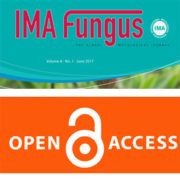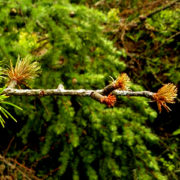Multiple new cryptic pathogenic Phytophthora species from Fagaceae forests in Austria, Italy and Portugal
Authors
Jung, Thomas1, 2, 3; Jung, Marília Horta1, 2, 3; Cacciola, Santa Olga4; Cech, Thomas5; Bakonyi, József6; Seress, Diána6; Mosca, Saveria7; Schena, Leonardo7; Seddaiu, Salvatore8; Pane, Antonella4; Magnano di San Lio, Gaetano7; Maia, Cristiana2; Cravador, Alfredo2; Franceschini, Antonio9; Scanu, Bruno9
Affiliations
1: Phytophthora Research Centre, Mendel University, 613 00 Brno, Czech Republic 2: Laboratory of Molecular Biotechnology and Phytopathology, Centre for Mediterranean Bioresources and Food, University of Algarve, 8005–130 Faro, Portugal 3: Phytophthora Research and Consultancy, 83131 Nußdorf, Germany 4: Department of Agriculture, Food and Environment, University of Catania, 95123 Catania, Italy 5: Federal Research and Training Centre for Forests, Natural Hazards and Landscape (BFW), Seckendorff-Gudent-Weg 8, A-1131 Vienna, Austria 6: Plant Protection Institute, Centre for Agricultural Research, Hungarian Academy of Sciences, Budapest, Hungary 7: Dipartimento di Agraria, University Mediterranea of Reggio Calabria, 89122 Reggio Calabria, Italy 8: Dipartimento della ricerca per il sughero e la silvicoltura, Agris Sardegna, Via Limbara 9, 07029 Tempio Pausania, Italy 9: Dipartimento di Agraria, Sezione di Patologia vegetale ed Entomologia, Università degli Studi di Sassari, Viale Italia 39, 07100 Sassari, Italy
Abstract
During surveys of Phytophthora diversity in natural and semi-natural Fagaceae forests in Austria, Italy and Portugal, four new cryptic species were isolated from rhizosphere soil samples. Multigene phylogeny based on nuclear ITS, ß-tubulin and HSP90 and mitochondrial cox1 and NADH1 gene sequences demonstrated that two species, P. tyrrhenica and P. vulcanica spp. nov., belong to phylogenetic Clade 7a, while the other two species, P. castanetorum and P. tubulina spp. nov., clustered together with P. quercina forming a new clade, named here as Clade 12. All four new species are homothallic and have low optimum and maximum temperatures for growth and very slow growth rates at their respective optimum temperature. They differed from each other and from related species by a unique combination of morphological characters, cardinal temperatures, and growth rates. Pathogenicity of all Phytophthora species to the root system of their respective host species was demonstrated in soil infestation trials.
This work received funding from the European Union’s Horizon 2020 research and innovation programme under grant agreement No. 635646, POnTE (Pest Organisms Threatening Europe).
Published on September 28, 2017 by IMA FUNGUS








